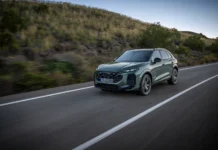
It’s been two years in the making now, but today the Trump administration is expected to announce the final rule rolling back fuel economy standards for new cars and trucks Wednesday. More specifically, the Environmental Protection Agency (EPA) and the Department of Transportation worked on preparing a rule that would weaken standards set by former President Barack Obama’s government back in 2012.
The rules will roll back average fleet fuel economy targets from 54.5 miles per gallon by 2025 to 40 miles per gallon. It also extends the deadline from 2022 models and beyond for one year, until 2026. Beyond that, the Trump administration’s proposal would mandate a 1.5 percent improvement in fuel economy each year. That’s down from 5 percent under the old effective rule — a move EPA Administrator Andrew Wheeler says will make new vehicles less expensive and improve fuel economy, while lowering air pollution.
California and at least 22 other states plan to challenge the revised rule, according to Automotive News. Several states have criticized the proposed changes, arguing studies that show relaxing fuel economy standards will increase fuel consumption and air pollution, particularly in terms of carbon dioxide. What’s more, while the rule would lower prices, Americans would wind up paying more in the long run due to increased fuel costs. A New York Times report cited a draft plan for the proposal that would allow for nearly a billion more tons of carbon dioxide to be released over the next five years. In that time, U.S. drivers would also consume 80 billion more gallons of gasoline, the piece says.
Beyond the states fighting the new regulations, it’s difficult to tell how this will impact automakers. At least in the short term, most manufacturers were already revising powertrains to meet the Obama-era standards. In other words, they’re already working toward much greater fuel efficiency, and it makes little sense to invest in less efficient platforms in the short term. Toyota, for instance, is expected to drop its thirsty 5.7-liter V8 engine in its redesigned trucks, like the Tundra and Sequoia. Instead, rumor has it the company will use a twin-turbocharged V6 powerplant instead, which should be much more efficient. Ford has shifted away from big, thirsty V8s in favor of its EcoBoost four-cylinder and V6 engines for the sake of both torque and fuel efficiency.
While the revised rules will pull back the proverbial gun from automakers to dramatically improve fuel economy, unpredictable market forces may end up keeping forward-looking companies on more or less the same trajectory. Trucks and SUVs are popular in the American marketplace, but the need for greater fuel efficiency and electric vehicles may come into sharp focus if gas prices — currently the lowest they’ve been for several years — does spike upward again in the wake of drastically increased demand or reduced supply.
One area that consistently drags down fuel economy is towing, but some of these trucks are still fairly efficient while doing it:

























